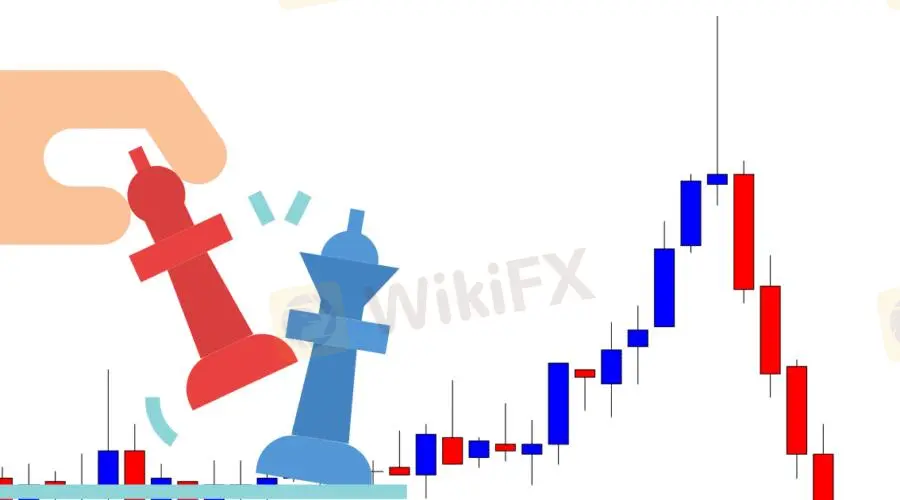简体中文
繁體中文
English
Pусский
日本語
ภาษาไทย
Tiếng Việt
Bahasa Indonesia
Español
हिन्दी
Filippiiniläinen
Français
Deutsch
Português
Türkçe
한국어
العربية
10 Fun Facts About The Forex Industry
Abstract:10 Fun Facts About The Forex Industry

The forex market is highly popular and a major reason for this is that it is always open in one part of the world. So, you can trade forex either in New York or London, Tokyo or Sydney, at different times on the same day. Now you know why they call it the market that never sleeps!
Also, the size of this massive decentralised market has rapidly expanded over the years, gaining in popularity due to technological advancements. The forex market has become easily accessible ever since people have been able to participate online, with millions of traders and investors from across the world wanting a piece of the pie.
You might already know all of this but, lets see how many more fun facts about the forex industry you know.
10 Fun Facts About the Forex IndustryNot many people are aware that forex trading dates back to ancient times. The first currency transaction can be traced back to the Talmudic writings. Money changers were people who used to help others change their currency, while taking a commission for their services.
Did you know that the GBP/USD currency pair is known as the Cable in the forex market? Amused? The reason why the pair is called the Cable is that before the advent of satellites and fibre optics, the London and New York Stock Exchanges were connected via a giant steel cable that ran under the Atlantic.
Another interesting fact about forex is the way the traders are categorised. Traders are categorised into bulls – or those who are optimistic and believe the market will go up – and bears – the downbeat ones, expecting the markets to fall. The names are derived from the fact that a bull strikes upwards and a bear swipes downwards.
The volume of trading in forex markets stands at more than $5 trillion a day, much more than the volume on the New York Stock Exchange. Also, the most traded currency is the US dollar, which features in nearly 80% of all forex trades.
Nearly 90% of forex trading is speculative trading.
Immediate exchange of currencies is called spot trading, since the exchange takes place “on the spot.”
Forex trading was once only possible for banks and institutions with at least $40 million to $60 million in liquid funds. Today, people with a much smaller sum can engage in forex trading.
Pip is a commonly used term in forex trading, referring to one-tenth of a pip or the fifth decimal in a currencys value. So, if we say the euro is 1.17224, 4 is the pip value.
I am sure most people think that the US is the center of forex trading, since maximum transactions involve the US dollar. That is not true. In reality, 41% of all forex transactions occur in the UK, with only 19% taking place in the US. So, the London Stock Exchange is the trading hub for forex deals.
The internet has revolutionised the way forex trading is done. A majority of forex transactions take place online, rather than on the exchange floors.
Hope you enjoy these Fun Facts about the Forex Industry!
-----------------------
Use WikiFX to get free trading strategies, scam alerts, and experts experience! https://bit.ly/2XhbYt5
Any question please contact us via inbox of Wikifx Malaysia: m.me/Wikifx.myMY

Disclaimer:
The views in this article only represent the author's personal views, and do not constitute investment advice on this platform. This platform does not guarantee the accuracy, completeness and timeliness of the information in the article, and will not be liable for any loss caused by the use of or reliance on the information in the article.
Read more

These Are How Millionaire Forex Traders Think and Act
It's no secret that in the world of trading, the most difficult thing is realization. Everyone can expect to be a successful trader, a trader who wins a lot of money, to a millionaire trader. But all this could be a dream if they didn't try to chase it.

How to Register Forex Trading, 5 Easy Steps to Follow
Foreign exchange has been developed and turned into something big in all of society. Not just office employees, but also students, kids in school, housewives, and even the unemployed.

Pip In Forex Trading, The Relation to Profitability
Pip or price interest point or percentage in point is a measurement tool associated with the smallest price movement any exchange rate makes. Usually, there is four decimal places used to quote currencies.

Euro Drops to 2-Decade Low on Recession Fears
Worries about how the European Central Bank will react also undermined sentiment after Germany's Bundesbank chairman Joachim Nagel lashed out at the ECB's plans to try and protect heavily indebted countries from sharp increases in lending rates.
WikiFX Broker
Latest News
Volkswagen agrees deal to avoid Germany plant closures
Geopolitical Events: What They Are & Their Impact?
Top 10 Trading Indicators Every Forex Trader Should Know
WikiEXPO Global Expert Interview: Simone Martin—— Exploring Financial Regulation Change
TradingView Launches Liquidity Analysis Tool DEX Screener
MultiBank Group Wins Big at Traders Fair Hong Kong 2024
'Young investors make investment decisions impulsively to keep up with current trends' FCA Reveals
Why Do You Feel Scared During Trade Execution?
CySEC Settles Compliance Case with Fxview Operator Charlgate Ltd
Malaysian Influencer Detained in Taiwan Over Alleged Role in Fraud Scheme
Currency Calculator


